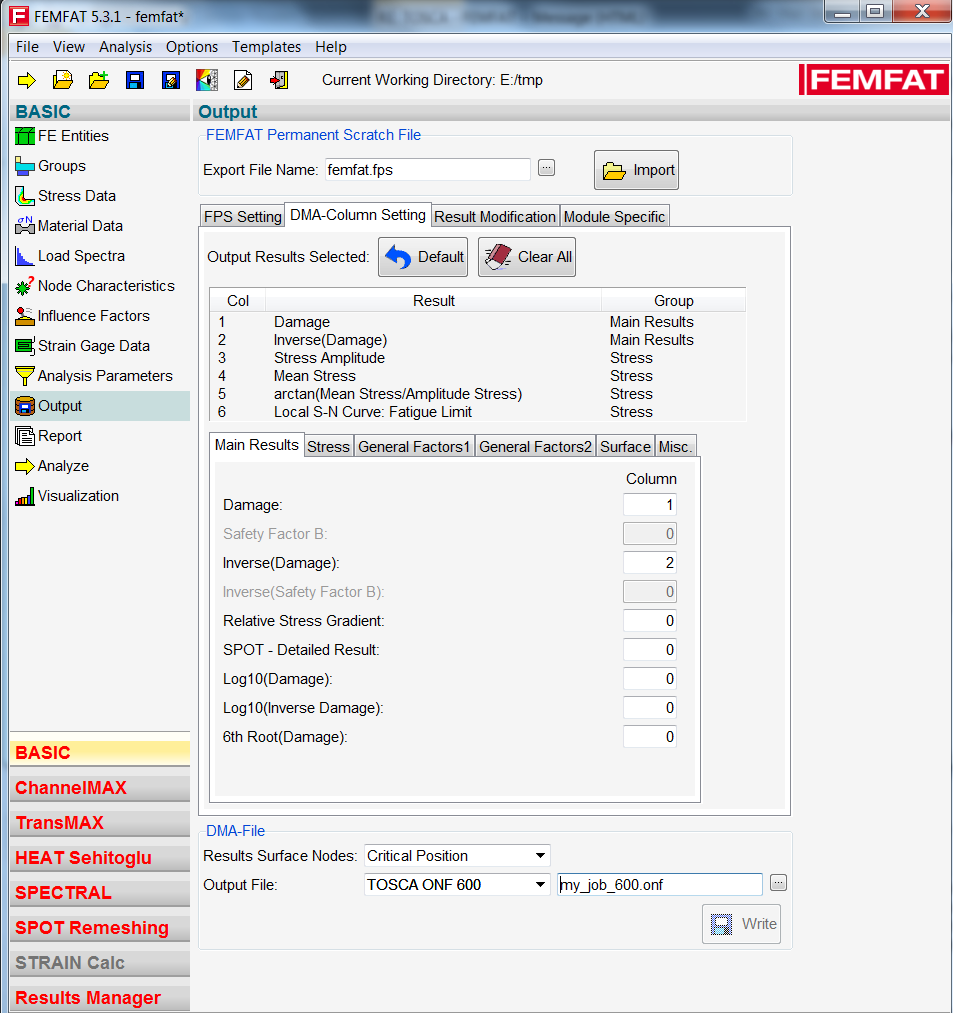FEMFAT® | ||
| ||
General
For a shape optimization with Tosca Structure in combination with FEMFAT®, special results must be requested in the FEMFAT® preprocessing. The requested result files can be read by Tosca Structure and allow the correct interfacing of the two software packages. Note that when using FEMFAT® together with Nastran, only Nastran mode i4 is allowed.
The following result formats for Tosca Structure might be requested in FEMFAT®:
ONF 600Tosca Structure optimization neutral file. This data block contains a node list and a damage value for each node.ONF 601Tosca Structure optimization neutral file with load case information. This additional data block contains load case information. This allows several FEMFAT® Basic calculations that might later be combined in Tosca Structure.
| Important:
The type of
It is important that the result from the life analysis has the same name as the life-solver input file except for the file extension. |
For example:
<life_input_file>.ffj
must produce a result file called:
<life_input_file>_600.onf (or <life_input_file>_601.onf)
| Important:
If the latter file does not exist in the working directory of the Tosca Structure Job, the optimization stops because of missing results. A corresponding error message is logged to the user. |
 |
| Important:
For all design nodes that are used for shape optimization a damage value must be provided. So the area for damage calculation can be reduced to the design area to save calculation time. |
Changes in the FEMFAT® FFJ File
During the fatigue life simulation preprocessing, the user selects the finite element solver
result file interactively in FEMFAT®. While exporting the ffj file, the absolute path settings for the stress
input file(s) are stored to the control file.
setValue {0 {{setValue {} {} StressFileDatasetNumber 0}}} {0 ok} StressInputFile C:\scratch\holeplate_dam.op2
If FEMFAT® is called inside the Tosca Structure optimization loop, it must be ensured, that FEMFAT® is reading the modified stress data in each design cycle. The new result files are
always generated in the Tosca Structure optimization working directory. So Tosca Structure is automatically modifying the ffj file and adapting the path of the
stress input(s) to a relative path into the actual working directory. This is admissible as
during the optimization procedure, FEMFAT® is always running in the Tosca Structure working directory.
setValue {0 {{setValue {} {} StressFileDatasetNumber 0}}} {0 ok} StressInputFile ./holeplate_dam.op2
| Important:
Be careful: if a FEMFAT® analysis should be executed outside Tosca Structure based on a Tosca Structure-modified FEMFAT® input file. If FEMFAT® is not running in the directory where the |
Start of FEMFAT® in BATCH mode
For the optimization, FEMFAT® must run in batch mode. The following files must exist:
- Solver Input file(s) (
*.bdf, *.inp, *.cdb, ...) - FEMFAT® Jobfile
*.ffjThe FEMFAT® job file name and the FE-input file name are not required to be the same.
At the end of the job file, the FEMFAT® calculation must be started. The following entry must exist in the job file:
setValue {} {} StartAnalysisLoop
This can be realized by exporting the ffj file from the FEMFAT®
application after the execution of the analysis.
The FEMFAT® batch run should be tested before the complete optimization is started. The command-line for a FEMFAT® batch run is the following:
Windows:
<femfat_install>\bin\femfat.bat -job=<jobname>.ffj
Linux:
<femfat_install>/bin/femfat -job=<jobname>.ffj